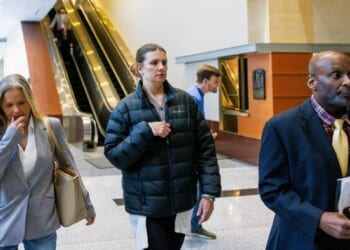Satellite communications used to be the domain of weather forecasters, cable providers, and aerospace engineers. That changed when Low Earth Orbit (LEO) satellites came along—and when Elon Musk decided to launch thousands of them into space. Now, satellite broadband is no longer a technological curiosity. It’s an emerging infrastructure option with global implications for connectivity, competition, and communications policy.
With higher speeds and lower latency than earlier generations of satellites, LEOs have proven useful for residential broadband in rural areas, backhaul for mobile carriers, precision agriculture, disaster recovery, and even enterprise-scale Internet of Things applications. In just a few years, the number of LEO satellites in orbit has increased tenfold. SpaceX’s Starlink, which began formally offering satellite broadband in 2021, now serves more than seven million subscribers across 150 countries. Between June and August of this year alone, the service added a million new users. That kind of growth is hard to ignore, and policymakers are scrambling to keep up.

To help bridge that gap, the New America Foundation’s Wireless Future Project and the International Center for Law & Economics convened a bipartisan working group of experts—industry leaders, regulators, economists, and academics (myself included)—to map out the policy challenges facing LEO systems. Our final report, to be the centerpiece of a November 13 symposium featuring Jay Schwarz, chief of the Federal Communications Commission’s Space Bureau, aims to help federal and state leaders better understand this fast-changing landscape.
Three key areas emerged as priorities: spectrum access, competition, and inclusion in broadband deployment policy. LEO satellites are pushing the boundaries of all three.
First, spectrum. Every wireless device relies on radio spectrum. But spectrum is limited and highly contested. Today’s LEO operators face slow, outdated, and overly customized licensing processes that limit innovation and access. Our working group recommends shifting toward a more flexible framework with clear, ex ante rules and targeted enforcement. The goal is to allow LEO providers to coordinate spectrum use more effectively without being hobbled by policies written for a different era.
Second, competition. Starlink is far ahead of its rivals, with more than 8,000 satellites in orbit—ten times the combined total of its two closest competitors. That has raised concerns about market dominance. But the landscape is more complex than it appears. Starlink has innovated, achieving more economies of scale and vertical integration than its rivals. And LEO systems around the world are shaped not just by market forces but by geopolitics: China and the EU are backing their own constellations, while the UK has invested in OneWeb. Subsidies tilt the playing field. Our report encourages policymakers to remain vigilant—to promote fair competition while recognizing that consolidation and vertical integration can often benefit consumers.
Third, digital equity. One of LEO’s greatest strengths is its potential to close persistent gaps in broadband access. Because the satellites don’t require expensive ground infrastructure, they can serve homes and businesses in places where it would be prohibitively expensive to run fiber optic cables. That makes LEO an ideal fit for hard-to-reach areas—and a valuable tool to close the digital divide. But inclusion in government subsidy programs remains inconsistent. Too often, LEO systems are excluded or sidelined, either because of outdated assumptions about performance or lack of clarity in program design.
The working group’s report urges policymakers to bring LEO into the fold more effectively. The technology isn’t perfect—capacity is finite, and pricing can be high in some markets—but it’s an important part of the solution, as evidenced by its growing use. Governments should incorporate LEO’s strengths and limitations when crafting funding programs, avoiding one-size-fits-all technology assumptions.
In an era where partisanship often clouds even the most practical policy conversations, LEO policy lends itself to common ground. We need updated licensing systems, smarter spectrum policy, considered competition policy, and an inclusive approach to broadband access. Policymakers across the political spectrum should see LEOs as a chance to connect more people, more quickly, and more affordably than ever before.
The post Low Earth Orbit Satellites Are Taking Off. Governments Need to Catch Up. appeared first on American Enterprise Institute – AEI.











